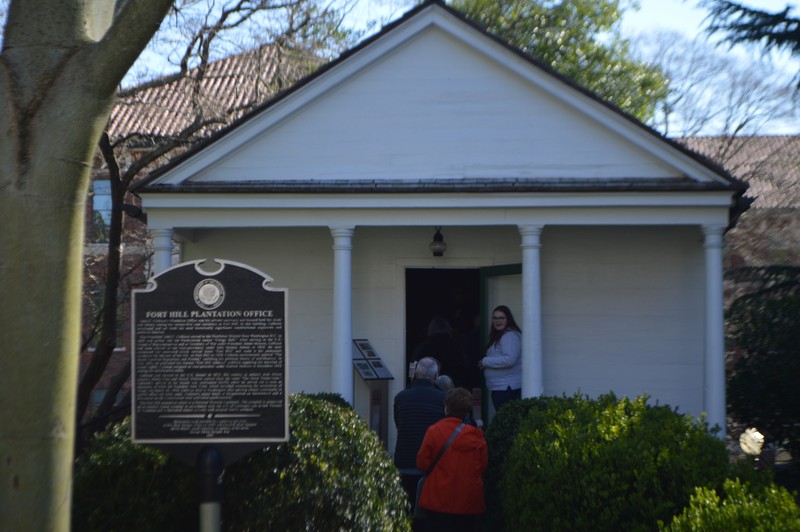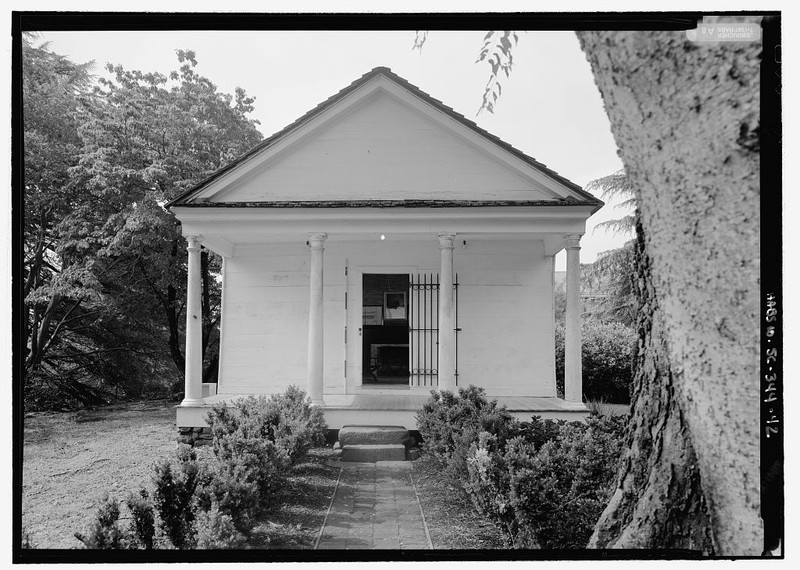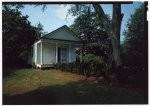Fort Hill-Plantation Office/Library
Introduction
Author-Uploaded Audio
00:00 / 00:00
Listen to a narration of this entry's description by Fort Hill User.
Text-to-speech Audio
Images
Tours of the Plantation Office

Thomas Green Clemson referred to it as "Mr. Calhoun's Library"
.jpg)
View of Fort Hill from the Office
.jpg)
Library of Congress Image of the Office from the Back Door

Library of Congress Image of the Office

Colorized Library of Congress Image

Colorized Library of Congress image of the office from the back door

Backstory and Context
Author-Uploaded Audio
00:00 / 00:00
Listen to a narration of this entry's description by Fort Hill User.
Text-to-speech Audio
This simple structure oversaw life at Fort Hill plantation. Its wooden board construction were likely formed and joined by the skilled hands of enslaved laborers, like the other structures at Fort Hill. The office is the only original outbuilding to have survived to today as its protection was provided for Thomas Green Clemson's will. When Calhoun was at Fort Hill, the business of managing the plantation, and the enslaved population which labored on it, would have been conducted in this office. In the summer of 1831, while Calhoun served as Andrew Jackson's Vice President, John C. Calhoun wrote the Fort Hill Address, which finalized his doctrine of nullification.
On display in this room, alongside the host of Calhoun artifacts listed above, is an eighteen volume Encyclopedia Britannica which was part of Fort Hill's library. The book press with wheel beside the fireplace also belonged to Calhoun.
In April 1881, Scribner’s Magazine published an article entitled, “The Calhoun Summer Home.” It included an engraving of the inside of this Study. At this time, Thomas Clemson, the widower of Anna Calhoun Clemson, lived at Fort Hill as a hermit. Much of what is shown in this illustration remains within the Study today. Clemson composed his will, sealing his decisions for Fort Hill plantation to be the site for Clemson University and its dwelling house as an historic house museum with original “vestures.”
Cite This Entry
Caroline M. Ross on behalf of Fort Hill. "Fort Hill-Plantation Office/Library." Clio: Your Guide to History. July 30, 2020. Accessed April 1, 2025. https://theclio.com/entry/68030/tour/15
Sources
“Fort Hill: The Land | Clemson University, South Carolina,” accessed May 21, 2020, https://www.clemson.edu/about/history/properties/fort-hill/.
“Historic Properties | Clemson University, South Carolina,” accessed May 21, 2020, https://www.clemson.edu/about/history/properties/.
“Educational Resources | Clemson University, South Carolina,” accessed May 21, 2020, https://www.clemson.edu/about/history/properties/ed.html.
image courtesy of Fort Hill
image courtesy of Fort Hill
image courtesy of Fort Hill
“Fort Hill, Clemson University Campus, Clemson, Pickens County, SC,” image, Library of Congress, Washington, D.C. 20540 USA, accessed July 22, 2020, https://www.loc.gov/item/sc0118/.
“Fort Hill, Clemson University Campus, Clemson, Pickens County, SC,” image, Library of Congress, Washington, D.C. 20540 USA, accessed July 22, 2020, https://www.loc.gov/item/sc0118/.
“Fort Hill, Clemson University Campus, Clemson, Pickens County, SC,” image, Library of Congress, Washington, D.C. 20540 USA, accessed July 22, 2020, https://www.loc.gov/item/sc0118/.
“Fort Hill, Clemson University Campus, Clemson, Pickens County, SC,” image, Library of Congress, Washington, D.C. 20540 USA, accessed July 22, 2020, https://www.loc.gov/item/sc0118/.

